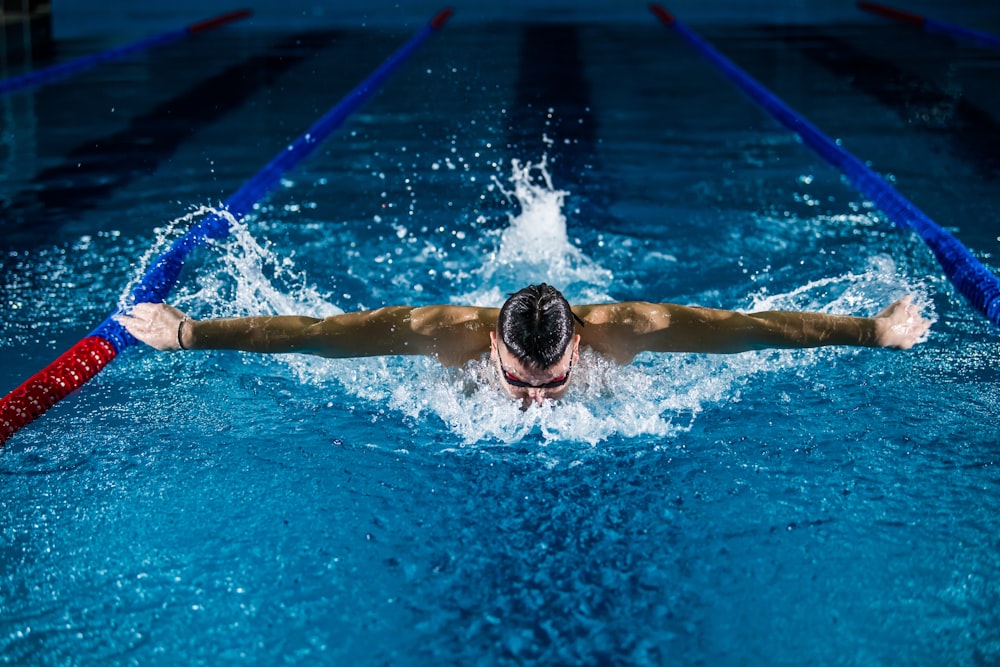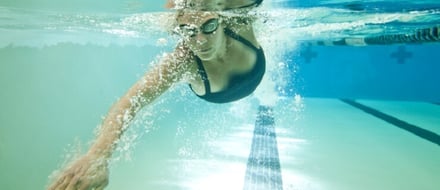MAKE A SPLASH
THIS SUMMER

Join Now For $0 Enrollment!
Learn MorePosted By: Chicago Athletic Clubs /

In terms of fitness, swimming laps could be the perfect workout: It strengthens and tones every major muscle group plus counts as cardio, and it’s low-impact and easy on your joints. “You can’t get injured unless you hit your head on the wall!” jokes Monika Suto, aquatics director for Chicago Athletic Clubs.
But there is one potential drawback: Unlike running on a treadmill or taking a group class, where you have endless opportunities for distraction — TVs, music, chatting with other gym-goers or workout buddies and using various gear — swimming tends to be a solitary, quiet experience. That appeals to some exercisers, but for others, it’s what keeps them on dry land. Luckily, if you’re in the latter group, there are a few ways you can make swimming more fun.
One of the best, especially if you’re a competitive or social type or enjoy team sports, is joining a swim team, suggests Suto, who works with CAC’s Master Swim Team. Just like youth swim teams, adult teams hold practices and compete in local, state and national competitions. “The only difference is at this age, you decide which events to swim — it’s a lot of fun,” she says.
Group or private lessons are another option for beginner and advanced swimmers alike. They give you the social component of a group class or training session as well as help you learn proper technique, which is essential, Suto says. Learning good form from the get-go or correcting bad habits helps maximize your time in the pool and delivers the best fitness benefits.
Also, don’t underestimate the power of new and good-quality gear. A comfortable bathing suit, goggles and a cap that fit well and gadgets like waterproof headphones and MP3 players can spark motivation, beat boredom and improve your experience in the pool, says Brianna Battles, a former competitive swimmer and strength, conditioning and wellness coach in Thousand Oaks, California. Likewise, using a gym’s pool gear and incorporating drills where you only kick or work on your stroke also keeps things interesting. Here’s what you’ll typically see around a pool.
Kickboards
By keeping your top half afloat, a kickboard lets you focus on your legs, which strengthens and tones the muscles and helps you improve your technique. “Your kicks will get stronger,” Suto says. To use, hold the kickboard on each side with your arms out in front of you. Put your face in the water or out and concentrate on kicking from your hips.
Pull buoys
“Pull buoys are the opposite of kickboards; they stabilize your legs,” Suto says of the hourglass-shaped tools that you hold between your thighs. With legs afloat and no need for kicking, you can concentrate on arm strokes and breathing technique. “They’re great when you’re learning,” she says. Triathletes also like using them during training when they want to preserve their leg muscles for cycling or running.
Swim fins (sometimes called zoomers)
Pool fins, worn on your feet, are shorter versions of those used by scuba divers and snorkelers. “They make you faster and help you better control your kicks, which strengthens your legs really well,” Suto says.
Hand paddles
Think swim fins for your hands; by increasing the surface area of your hands, these tools help you move faster and with more power through the water. “Swimmers use them to make their shoulders stronger,” Suto says.
Are you a swimmer looking for some land workouts? Check out our exercises for swimmers.
| Chicago Athletic Clubs
| Chicago Athletic Clubs
| Chicago Athletic Clubs
| Chicago Athletic Clubs
| Chicago Athletic Clubs
© 2026 Chicago Athletic Clubs. All Rights Reserved. Privacy PolicyEmployee Login
https://www.chicagoathleticclubs.com/
https://www.chicagoathleticclubs.com/services/personal-training/
0
5000
true